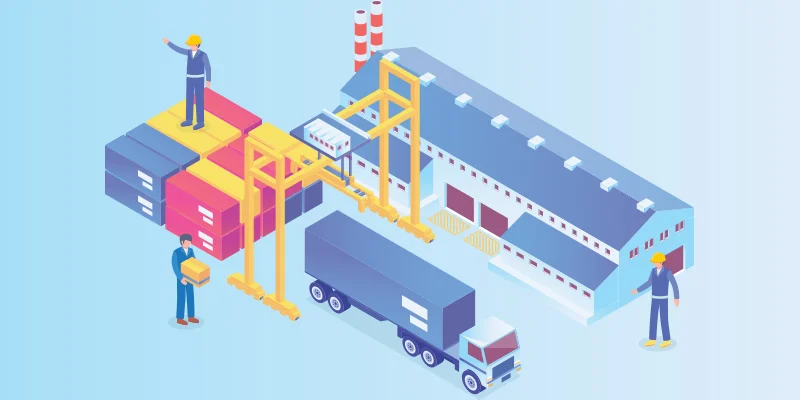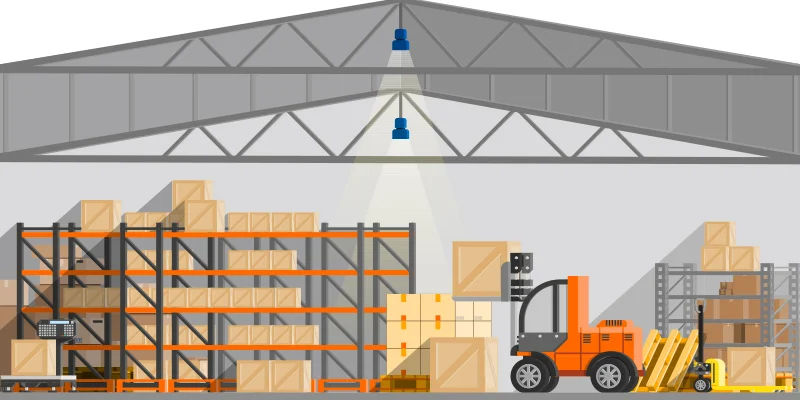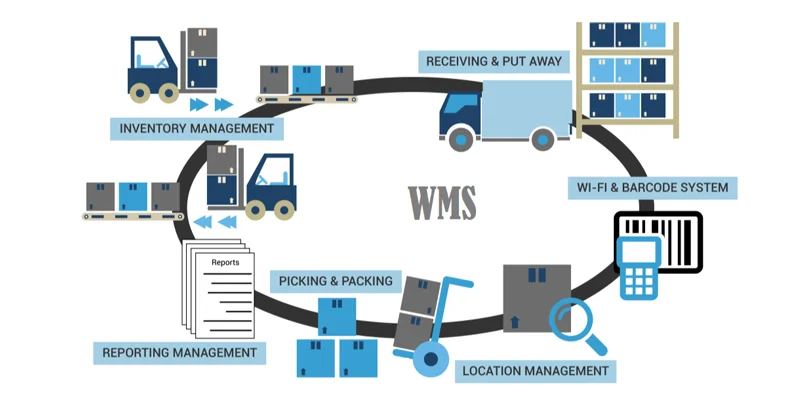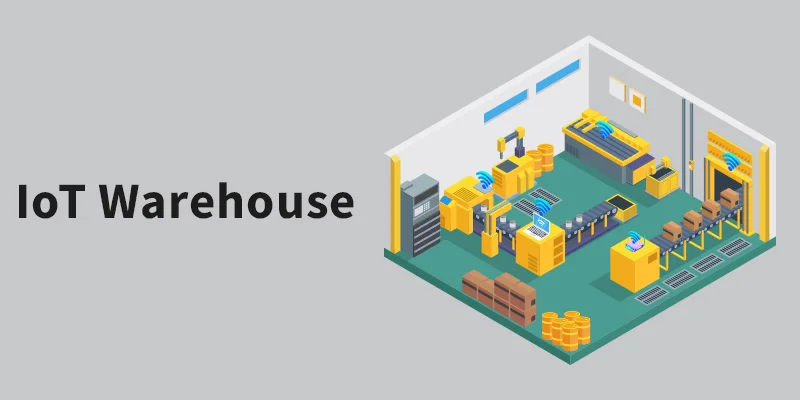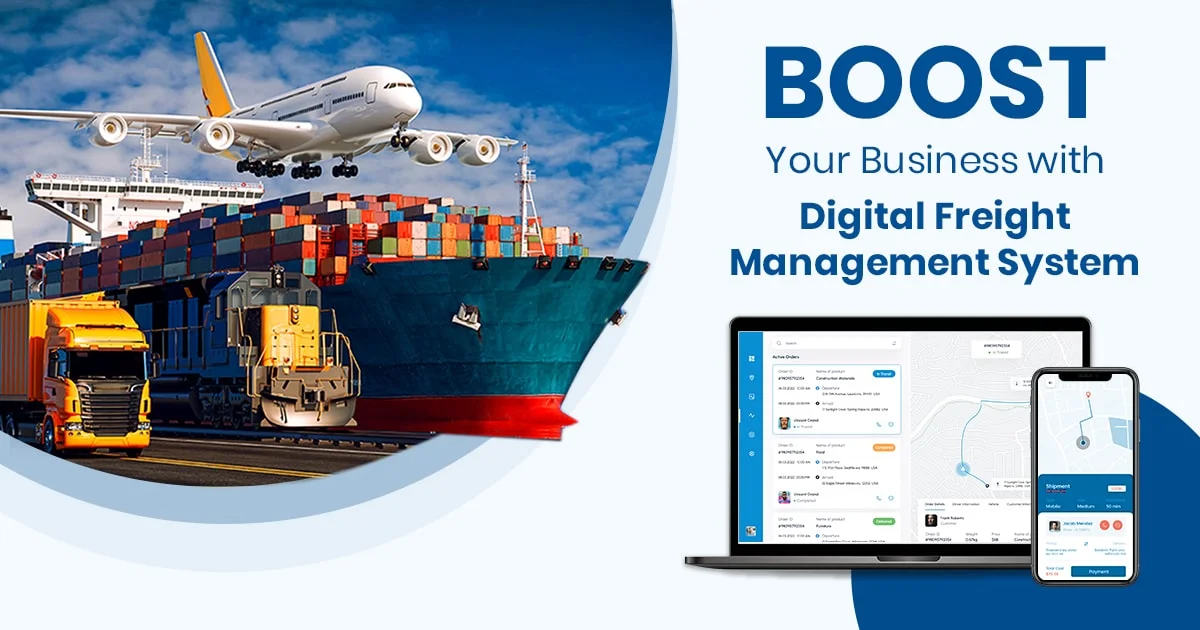A warehouse management system is software that acts as a central control system for a warehouse’s daily operations. It streamlines and optimizes inventory tasks from tracking to order fulfillment.
Are you struggling to scale up your logistics business? Maybe it’s because you face issues like inventory inaccuracies, order fulfillment errors, labor optimization, or warehouse space. A logistics warehouse management system (WMS) can help you handle these challenges head-on. A WMS streamlines warehouse processes, reduces inefficiencies, and boosts overall productivity.
It offers visibility into inventory and also manages supply chain fulfillment. A WMS is essential for businesses that maintain smooth supply chain operations by streamlining processes, reducing errors, and boosting efficiency.
So, what makes it essential?
The role of warehouse management system is not just keeping track of stock. It’s about ensuring seamless integration within the broader supply chain and improving tasks from shipping and receiving to resource management. For businesses, this means lower costs, faster processing, and a competitive edge in meeting customer demands.

Let’s dive deeper into logistics and warehouse management and why they are vital for your business.
Functions and Components of a Warehouse Management System
Understanding how a logistics warehouse management system can accelerate your business is crucial and helps you focus on the core operations.
Here are a few functionalities and components you must go through:
What does a warehouse management system do?
A warehouse management system can enhance every activity flowing into and out of a warehouse, improving the entire supply chain. From receiving and storage to picking, packing, and shipping, a software solution for warehouse management optimizes each step.
It tracks stock levels in real-time, ensures accurate order fulfillment, and minimizes errors in picking and shipping. Streamlining warehouse operations reduces costs, accelerates throughput, and boosts accuracy.
The system also helps improve space utilization and labor efficiency, enabling faster processing times and better decision-making. Ultimately, robust WMS logistics is essential for maximizing productivity across the supply chain.
Key features of a warehouse management system:
Understanding key features of the logistics warehouse management system is essential for your development planning. Here are some key features you can include in a WMS to streamline operations.
Tracking Stocks
A warehouse management system ensures accurate inventory tracking, helping managers monitor incoming and outgoing stock. It also provides insights into stock levels and optimizes ordering based on minimum and maximum thresholds, reducing shortages and overstocking.
Picking and Shipping
WMS makes order picking and shipping seamless. It ensures the right products are picked, reducing errors and delays, and guarantees that shipments reach the correct clients on time, eliminating costly shipping mistakes and returns.
Layout Design
A warehouse management system optimizes layout by considering factors like product demand, weight, and accessibility. It leads to a more efficient storage system, improves workflow, and ensures easy product access, streamlining overall operations.
Managerial Information
A logistics warehouse management system provides detailed business insights through reports, such as customer order data, which help you to make informed decisions. This data-driven approach supports strategic planning and enhances overall supply chain efficiency.
Real-Time Insights
Provides you with immediate access to inventory and operational stats. It also boosts accuracy, reduces costs, and enhances decision-making, leading to improved revenue generation and reduced waste.
Labor Management
It helps track and evaluate employee performance in real time, serving as a key metric for productivity. It also supports creating incentive programs, boosting morale, and preventing burnout while ensuring efficient warehouse operations.
Components of a warehouse management system:
A warehouse management system comprises several interconnected components that streamline operations and improve supply chain efficiency. Inventory management ensures real-time tracking of stock levels and movements within the warehouse, preventing stockouts or overstocking.
The Warehouse Control System (WCS) coordinates automation tools like conveyors and robotics for optimal goods movement. Here’s a breakdown of the essential elements:
1. Inventory Management
Tracks stock levels and movements in real time to prevent stockouts, overstocking, and inventory discrepancies.
2. Warehouse Control System (WCS)
Manages and coordinates automation tools, such as conveyors, sorters, and robotics, to ensure smooth and efficient goods movement within the warehouse.
3. Barcode and RFID Technology
Enhances inventory accuracy through item-level tracking using barcode scanners or RFID readers through trucking dispatch software. This reduces manual errors for the drop and hook trucking business.
4. Labor Management
You can monitor workforce performance and productivity, which helps optimize labor allocation and scheduling.
5. Reporting and Analytics
Provides actionable, data-driven insights to support strategic decision-making and continuous process improvement.
6. System Integration (ERP/TMS)
Connects with Enterprise Resource Planning (ERP) systems and Fleet Management Technologies for Transportation Management Systems (TMS) for end-to-end supply chain visibility and coordination.
7. Warehouse Layout & Slotting Optimization
It helps you to organize inventory storage based on product velocity and category, improving picking efficiency and space utilization.
8. Returns Management
Streamlines the reverse logistics process by efficiently handling, tracking, and reintegrating returned goods.
Benefits of a Warehouse Management System in Logistics
Implementing the best warehouse management system can improve accuracy and speed up logistics processes, improving overall ROI. The components of a warehouse management system help keep everything organized, from inventory to shipping. Looking for the best warehouse management system software? It’s the key to running a smoother, more effective logistics operation.
If you are wondering what effect it would have on my business if I decided to own a logistics warehouse management system, consider the reasons below for logistic software development.
1. Enhanced Inventory Accuracy & Control
Logistics inventory management systems will assist you in inventory management by reducing inventory levels and improving order fulfillment. The advantages of warehouse management systems include improved efficiency, better stock control, and accurate delivery tracking. Using warehouse automation technology with these systems can guarantee reduced order re-cycle time.
If your workers aren’t aware of your cargo’s location, it can slow operations and create bottlenecks. IoT fleet management solutions and warehouse management systems combined help you gain real-time visibility across the supply chain. This seamless coordination helps streamline inventory tracking, improve delivery accuracy, and optimize supply chain efficiency.
Even though RFID Inventory Management is also a good solution, logistics warehouse management software helps you keep track of every bit of information at the ground level and enhances your inventory accuracy.
2. Maximizing Warehouse Space Utilization
Imagine a scenario where your warehouse’s essential and high-selling goods are in a place your employees cannot easily reach. This will increase the time it takes to retrieve items. In addition, inefficient warehouse placements increase labor costs and affect productivity.
Top warehouse management systems help in this situation, telling the warehouse manager where to put an item and utilizing the maximum space.
Hence, optimizing your storage systems, rack patterns, and palettes using logistics warehouse management systems is better if you want to use warehouse space efficiently.
3. Faster Order Fulfillment & Customer Satisfaction
The warehouse plays a key role in the customer’s shopping experience. It helps track which items are selling well so you can restock them quickly and avoid running out of stock.
By streamlining the process from product ordering to shipping, businesses can better predict item availability and delivery dates. This leads to a smoother customer experience and ensures products arrive on time.
A warehouse management system tracks and manages shipments through automation. You can monitor tasks, shipments, and goods storage with the help of warehouse management apps and systems.
Using a warehouse management system in logistics ensures efficiency, helping you stay on top of warehousing in logistics and supply chain management.
4. Increased Workforce Productivity & Cost Savings
Logistics mobile app development and software help you move goods faster with fewer obstacles, enhancing your operations’ efficiency, consistency, and quality control.
You can also schedule staff through the warehouse management system in logistics for specific tasks, reducing downtime. It improves worker efficiency, allowing them to finish more quickly.
Warehouse management system software improves the accuracy of inventory records for future needs and helps reduce the need for costly physical inventories.
A warehouse management system in logistics leads to reduced errors and smoother operations, leading to long-term gains in efficiency and cost savings.
Types of Warehouse Management Systems
Warehouse management system software comes with various tools and modules. Each type has its advantages in the warehouse management system.
Unfortunately, choosing the best warehouse management system for your business is not always easy. Here, we will help you find the best one for your organization.
1. Standalone System
Standalone logistics warehouse management systems are also considered basic warehouse management systems. They contain only the basic and most crucial warehouse management features.
Ideal warehouse management system for small businesses that don’t have much to spend on software. It helps you manage inventory and warehouse operations.
Standalone WMS, like Fishbowl, tracks inventory, manages picking/packing, and processes shipments without full ERP integration.
Features of Standalone WMS
Examples:
2. Supply Chain Modules
The logistics warehouse management system is a subcategory of supply chain management systems (SCM). SCM software has a broad scope, including vendor-to-business processes and risk management.
Choosing these types of software means investing in supply chain planning tools that also offer warehousing features.
The global fashion retailer ZARA uses integrated supply chain modules to design, manufacture, and deliver new styles to stores in under two weeks.
Features of Supply Chain Modules
Examples:
3. ERP Module
An ERP module is a system that integrates with other business functions, helping to manage warehouse operations alongside other areas like inventory and finance. It is ideal for large companies because it combines everything in one system.
Coca-Cola Beverages Africa uses Microsoft Dynamics 365 ERP modules to streamline operations by integrating finance, supply chain, and sales.
Features of EPR Module
Examples:
4. Cloud-Based
The cloud-based type of warehouse management system runs on the cloud, providing businesses of all sizes with the ability to scale and adjust as needed. It’s gaining popularity because it offers benefits like lower setup costs, easy access from anywhere, and real-time data updates.
When the Shopify store receives an order, the cloud-based logistics platform ShipBob automatically picks, packs, and ships it and updates the tracking.
Features of Cloud-Based
Examples:
| WMS Type | Best For | Features | Cost |
|---|---|---|---|
| Standalone System | Small and medium-sized businesses | Inventory tracking, order management, labor management, easy to implement, cost-efficient | 20,000 to 100,000 USD One time |
| ERP Module | Large enterprises | Seamless integration with ERP systems, real-time data visibility, and a broad range of business processes | Initially, high cost and ongoing maintenance |
| Cloud-Based | Businesses of all sizes | Scalability, flexibility, real-time visibility, reduced deployment costs, enhanced security | Subscription-based (varies by usage) |
| Supply Chain Module | Businesses with complex supply chain needs | Integration with other supply chain software, optimize inventory management, improve order fulfillment, and streamline shipping. | Varies (typically high due to integration) |
How to Choose the Best Warehouse Management System for Logistics?
Now that you are aware of the importance of warehouse management system software, let’s find out how to select the best one.
Key Features to Look for in a WMS
Here are some key features and angles to consider when looking for a warehouse management system software
Best Warehouse Management System Software Comparison
Compare features, pricing, and scalability between different WMS options to find the best fit for your business needs.
Warehouse Management System for Small Business vs. Enterprise Solutions
Consider whether the system suits small businesses with limited needs or large enterprises requiring complex, scalable solutions like enterprise fleet management.
Integration & Scalability of WMS Software
Here are some points you should consider regarding the integration & scalability of warehouse management system software:
Warehouse Management System Integration with ERP & eCommerce
Ensure the WMS integrates seamlessly with your ERP system and eCommerce platforms for smooth data sharing, order fulfillment, and inventory management.
Warehouse Management System in Supply Chain
Look for a WMS that connects and optimizes warehouse operations within the broader supply chain to improve efficiency, visibility, and coordination across processes.
Cost Considerations: How Much Does a Warehouse Management System Cost?
Here are the points you should consider regarding cost considerations for a warehouse management system:
Breakdown of Warehouse Management System Software Cost
Understand the various components of the WMS cost, including software licensing, implementation fees, maintenance costs, and any additional expenses like training or integration.
Warehouse Management System Market Trends & Pricing
Stay updated on current market trends and pricing for WMS solutions to help gauge the cost range and make informed decisions based on industry standards.
Ask These 6 Questions to Select the Best Warehouse Management System
1. Does This WMS Solution Do More with Less?
Well, this is a standard question you must ask yourself: Will this WMS streamline my business?
Try to select warehouse management system software that minimizes your work. It tracks your employees’ performance and gives you clear visibility into your workforce’s efficiency.
With warehouse management system software, you can perform dozens of other tasks, such as managing logistic inventory, in addition to monitoring your workforce with freight management systems.
2. How Simple Is My Logistics Warehouse Management System to Use?
There is a high chance that your senior management might not know the systems quite well. And a complex logistics warehouse management system might confuse your employees and take more time to adapt.
Hence, when choosing a WMS, look for one with simple-to-understand and easy-to-navigate menus. Look for a system with a dashboard that provides direct access to the most critical data with one click.
3. Will This System Adapt to My Business Growth?
A logistics warehouse management system should be able to scale with the business’s expansion and meet the needs for future requirements. In addition, when considering logistics app development, it’s important to find compatibility with other ERP systems. Choosing an open-source warehouse management system software allows it to work with future applications and operating systems. You need to decode whether your WMS will be able to work smoothly with other ERPs or not.
Lastly, your logistics warehouse management system should be adaptable to various business types and sizes, like wholesale and industrial distributors.
4. Does This Warehouse Management System Help Me Manage My Resources?
A good WMS will let you manage everything from products to employees to transactions.
Check out some of the functions of a warehouse management system:
5. What Other Users Are Saying About It?
It is best practice to ask opinions about the logistics warehouse management system from people who actually use it. Ask them about the performance of the system. Know if it is worth buying one such.
Get to know what kind of customer support they have during their use.
6. How Much Will Be the ROI?
The cost of developing a WMS is another factor besides the development expenses of features and functionalities. You must consider a budget plan when choosing a logistics warehouse management system.
Don’t fall into the trap of the lower warehouse management system cost. Of course, it will cost you fewer bucks upfront, but in the future, with the expansion and growth of your organization, you will have to upgrade it. It may cost you more if you choose the one with more features and functions of the warehouse management system.
AI, Cloud & IoT Adoption in Warehouse Management Systems
The future of warehouse management systems (WMS) lies in the seamless integration of AI, Cloud, and IoT technologies. A cloud-based WMS is becoming the standard due to its scalability, flexibility, and ability to provide real-time data access from anywhere. This makes it a critical asset for businesses seeking efficiency and cost-effectiveness. With the integration of AI, warehouse operations are evolving through smart automation, predictive analytics, and optimized decision-making that can help you achieve greater accuracy and faster processing times.
IoT enables real-time tracking of inventory, assets, and even workers, offering enhanced visibility and control over warehouse operations.
Custom Warehouse Management System Development with Excellent Webworld
The above article should have helped you understand how logistics warehouse management systems improve the efficiency of day-to-day operations. However, one critical aspect of this process is understanding the factors that reduce the cost of logistics warehouse management system development. Excellent Webworld is an experienced web development company with industry expertise.
We have over 13 years of experience providing AI-integrated software development services. Our team of experts has successfully developed high-performance logistics apps that integrate advanced AI technologies. With more than 900 successful projects, our experts have catered to different client needs in app development.
We are a leading app development company that offers end-to-end development and integration for AI practices. Contact us now to learn more about our solutions.
FAQs – Logistics Warehouse Management System
If you are facing inaccuracies in inventory, order fulfillment errors, labor optimization, or warehouse space, you should consider building a warehouse management system.
A warehouse management system focuses on warehouse operations, and an integrated EPR WMS is a module that provides a wider scope of business management.
A standalone WMS can cost you around 20,000 to 100,000 USD, depending on multiple factors, and an EPR module can cost you more than that, including maintenance costs.
A custom warehouse management system can be worthwhile for a business with unique or complex needs, as this allows for tailor-made solutions that can streamline operations, reduce costs, and enhance efficiency.
You should focus on selecting a flexible, cloud-based solution with robust integration capabilities and automation features, along with training the team to scale with your business.

Article By
Paresh Sagar is the CEO of Excellent Webworld. He firmly believes in using technology to solve challenges. His dedication and attention to detail make him an expert in helping startups in different industries digitalize their businesses globally.

